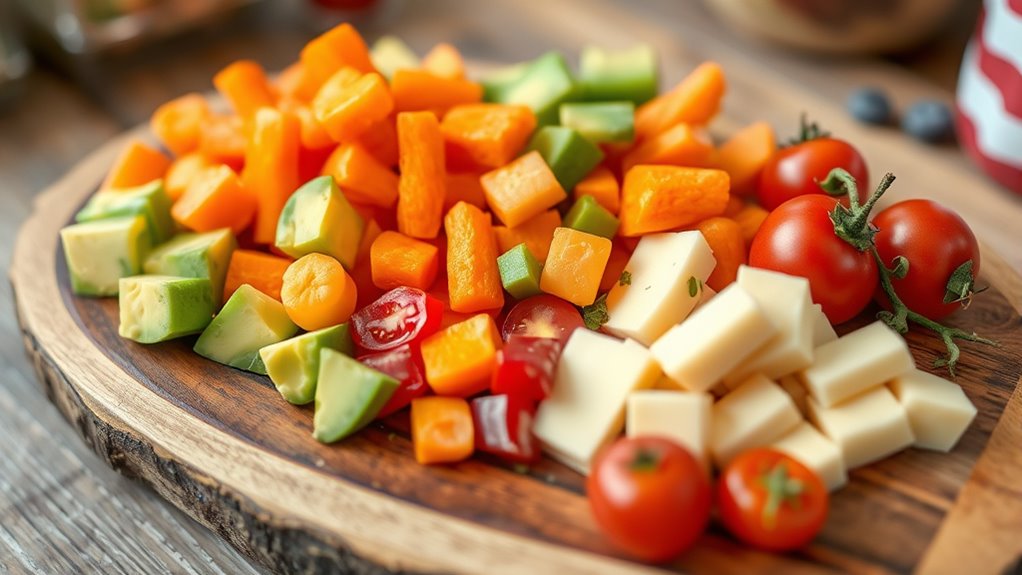Introducing nutritious finger foods to your baby supports independence, helps develop oral and motor skills, and makes mealtime more engaging. Soft fruits like bananas, steamed vegetables such as carrots, and easy-to-chew whole grains provide essential vitamins and are gentle on gums. Chilled or cooled foods can also soothe teething discomfort. Exploring these options encourages confidence and healthy eating habits—if you continue, you’ll discover more tips to make finger food time safe and enjoyable.
Key Takeaways
- Offer soft, ripe fruits like banana slices and steamed vegetables such as carrots for safe, nutritious finger foods.
- Choose foods rich in essential vitamins that are easy to hold and gentle on gums, supporting growth and development.
- Incorporate chilled or cooled foods like chilled fruits to help soothe teething discomfort during self-feeding.
- Select foods that promote oral motor skill development and transition your baby toward more solid textures.
- Establish consistent mealtime routines with finger foods to encourage exploration, independence, and social interaction.

Introducing finger foods into your baby’s diet can be an exciting milestone, especially when practicing baby-led feeding. This approach encourages your little one to explore different textures and flavors, promoting independence and fine motor skills. As your baby begins to self-feed, you’ll notice their interest in grabbing and chewing small pieces of food. It’s a natural progression that not only supports their developmental growth but also helps establish healthy mealtime routines. When choosing finger foods, prioritize options that are nutritious and safe, making sure they’re easy to hold and chew. Soft fruits like banana slices or steamed vegetables like carrots are excellent choices, providing essential vitamins while being gentle on gums.
Teething relief is another reason many parents are enthusiastic to introduce finger foods early on. Chewing on soft, cooled foods can soothe sore gums and reduce discomfort during teething. Offering chilled fruit or even a cold, damp washcloth for your baby to gnaw on can provide additional relief. As your baby explores different textures, they’re also honing their oral motor skills, which will be instrumental when they transition to more solid foods. Keep in mind that teething isn’t the only benefit; these finger foods help your baby develop a sense of independence and confidence at mealtime. It’s important to be patient and observant, ensuring that the foods offered are appropriate for their age and chewing ability.
Mealtime routines become more dynamic and engaging with the inclusion of finger foods. Instead of purees or spoon-feeding, your baby gets to participate actively, which can make mealtimes more enjoyable for everyone. Establishing a consistent routine around these foods helps your baby learn what to expect, creating a sense of security and familiarity. Sit together at the table, and encourage your little one to explore their plate. This interaction not only fosters social skills but also reinforces healthy eating habits. Be prepared for messes—it’s part of the process—and remember that patience is key as your baby learns to coordinate their hand-eye movements and try new foods.
Conclusion
Now, as you watch your little one grasp those tiny pieces with enthusiastic hands, picture tiny fingers exploring a colorful world of flavors and textures. Each bite is a new adventure, a messy, joyful mess of discovery. With every crunchy carrot stick and soft avocado slice, you’re nurturing their independence and curiosity. So, keep offering those vibrant finger foods—you’re helping them build a foundation of healthy eating habits while creating beautiful, messy memories together.










